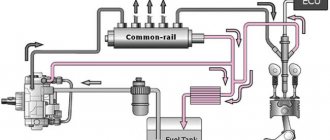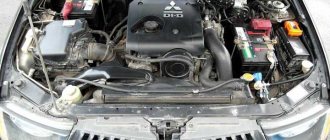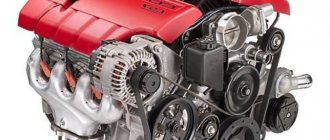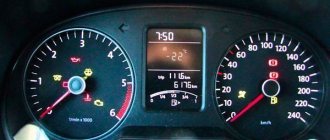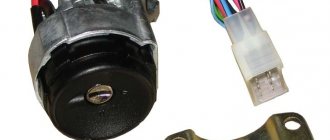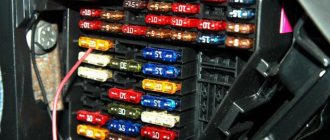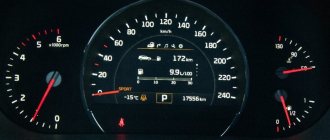Cars with diesel engines make up almost half of the total number of vehicles sold annually both at official dealer sites and in the secondary market.
Power plants of this type are characterized by efficiency, significant power and dynamics. Such units demonstrate high torque and efficiency that is fundamentally inaccessible for gasoline engines (35%-35% for diesel systems versus 25%-35% for their analogues). These advantages, as well as lower noise levels during operation and full compliance with increasingly complex environmental safety standards, have ensured the popularity of diesel engines in both passenger and commercial vehicle classes.
Why is it difficult to start a diesel engine in winter?
A drop in ambient temperature below 0°C causes the oil to thicken, fuel to evaporate less quickly, and the battery to discharge faster. In addition, diesel fuel tends to become waxy in the cold, and because of this, difficulties arise with pumping through the power system.
This problem especially often arises in the off-season, when daytime temperatures are still quite high, and at night the thermometer drops to negative levels. If the car owner has not changed the fuel to winter fuel and continues to drive on summer diesel fuel, this can lead to a typical situation - in response to turning the ignition key, the engine shows no signs of life.
The reason may be not only the inattention of the driver, but also the dishonesty of the gas station owners. After all, winter diesel fuel is more expensive, so dishonest sellers are often in no hurry to change it before stable frosts hit and sell summer diesel fuel at an inflated price. The problem also lies in the fact that it is impossible to identify a forgery based on organoleptic analysis alone - the fuel does not differ either in appearance or smell.
Mistakes of novice drivers
There are many of them, but typical ones can be identified:
- The use of ether and other means for a quick start. This is a very harsh method of reviving engines, suitable only for massive, outdated diesel engines. A clear non-compliance of such fuel with the requirements, and with a deviation of important characteristics not by a percentage, but several times, can lead to breakdowns of parts and even a fire. Moreover, you cannot saturate the air filter with anything.
- Rotate the starter for ten seconds or more. At the end of such a protracted attempt, the engine can barely crank over; there is no point in destroying the battery. You need to pause, allowing the starter and battery to recover.
- Incorrect operation with glow plugs. It is better to understand the algorithm for turning them on on a given car, understand how they work and what they are needed for, and then control the process consciously and without errors. Winter startup is mainly determined by these modest devices.
- Attempts to deceive fate by “finishing” summer diesel fuel. Paraffinization will begin already at a few degrees below zero, and its consequences will force you to stop using the car for a long time. And belatedly adding antigel to the tank will not help, it will not be able to mix with the frozen fuel.
If handled correctly, diesel will not create problems; just look at the vehicle fleet of the northern regions; all freight transport there uses these economical engines. And if you are not careful, even a gasoline engine will not start in severe frost.
How to start a diesel engine correctly in winter
The owner can insure himself against seasonal troubles in several ways:
- using a heated garage or parking lot during the cold season;
- installation of pre-heating systems on the engine and fuel filters;
- using various additives.
Warm parking does not allow the car to cool down overnight, so it will be possible to start without additional heating. Other methods require comments. The owner of a diesel car should read in detail and familiarize himself with the explanations with photos and videos, which show various options for solving the cold start problem.
Application of antigels and additives
This method is quite common, but experienced car enthusiasts are prejudiced against it. Adding such substances to the fuel tank can negatively affect both the operation of the power system and the engine itself. Additives are added to the tank before refueling so that they mix better with the fuel. In addition, it is recommended to do this at a temperature not lower than 0°C.
Attention!
If the breakdown is caused by the use of third-party additives, this may void the warranty. In this case, repairs to the internal combustion engine will be carried out at the expense of the owner.
Remote engine warm-up
One of the best solutions to the problem would be to install a pre-heater. This device will not only simplify engine starting, but also increase its service life and reduce fuel consumption. It is important that the use of such systems adds comfort, as it warms up not only the engine, but also the interior of the car.
Devices are divided into 2 types:
- autonomous;
- electric.
The easiest to install and use pre-start heaters are powered from a 220 V network. They increase the temperature of the coolant, due to which the engine heats up. This system is turned on from the remote control.
You can install the device yourself; you do not need to visit an auto center for this. As a rule, it takes about 0.5 hours to warm up the engine and interior. Such systems are inexpensive - on average from 1 to 5 thousand rubles.
Autonomous heaters are more convenient, as they can operate without access to an electrical outlet. However, their installation is more difficult and the cost is much higher. They are a chamber in the walls of which a coolant constantly circulates. As it warms up, it increases the temperature of the engine and interior, and also helps to defrost the windows in the car.
Attention!
Some modern cars with a diesel engine are equipped with a pre-installed pre-heating system. This allows you to start the engine even without glow plugs, which are not provided for in the design of the internal combustion engine.
Warming up the spark plugs
The reasons for the difficulties in starting a diesel engine at low temperatures also occur due to the difference in design compared to gasoline counterparts. There are no spark plugs, which are usual for gasoline engines; when they come into contact with them, the fuel ignites.
In a diesel internal combustion engine, glow plugs heat up and increase the temperature of the air supplied to the pistons. During diesel injection, temperature no longer matters. Ignition of the fuel mixture occurs independently - from compression and heating.
Warm up the candles as follows:
- turn the ignition key;
- wait for the signal to appear that the warm-up is complete (in some cars the indicator goes out);
- pause until there is a click, indicating that the voltage supply to the spark plugs has stopped;
- repeat the procedure 2-3 times;
- for the last time, without waiting for the sound of shutdown, they start the engine.
Attention!
The starting problem may be due to faulty glow plugs. Owners need to remember that the failure of one, as a rule, leads to the fact that others fail after it, so it is necessary to check their condition before the trip.
Lighting method
Exposure to low temperatures causes the battery to discharge faster than usual. The safest way to start the engine in this case is to use a jump starter. If it is not there, you will have to resort to the old method, calling on a “donor” for help.
However, when using this method, you should remember that it is not safe. So it should only be used as a last resort. And be sure to remember that you cannot:
- “light” a car with diesel fuel from a car with gasoline;
- do this at temperatures below -25°C;
- take as a donor a car with a smaller engine capacity.
Attention!
It is strictly forbidden to try to start the car if the electrolyte in the battery is frozen
What to do if the diesel engine does not start
If the power unit worked normally, but after a cold spell it did not start even after warming up with spark plugs, then you should check the glow plugs themselves, the condition of the fuel, as well as the air and fuel filters.
In some cases, it turns out that glow plugs require replacement. Also, if the air filter is dirty, there may not be enough air, and thickening of the fuel or contamination of the fuel filter leads to a lack of fuel.
We also recommend reading the article about why diesel is bad. From this article you will learn about possible reasons for difficulty starting a diesel engine after the power unit has warmed up.
By the way, on engines with high mileage, failure to start may indicate a decrease in compression due to general wear of the CPG. In this case, the engine must be disassembled, defective and repaired.
How to start a diesel engine in winter after a long period of inactivity
If, when you turn the key into the ignition, the engine does not start even after 3 attempts, it is better to stop them so as not to aggravate the situation - this can damage the starter or completely discharge the battery.
You will have to act almost the same as when starting a gasoline engine, but with some differences and nuances:
- the clutch is fully depressed;
- turn the key and wait for the glow plug indicator to go out;
- turn on the high beam headlights to warm up the engine;
- turn on the ignition, holding the key for 10-15 s.
If the engine starts, lightly press the gas pedal and let the car run for a while. That is, standard warming up takes place, as is the case with a gasoline car.
Types of combustion chambers
Depending on their geometry, the following types of combustion chambers are distinguished.
Separated.
In this case, the primary injection of fuel is carried out into a separate cavity located in the block head. This technology allows you to reduce the load on the piston group, as well as significantly reduce the noise from engine operation.
In this case, the process of mixture formation can be:
- Prechamber (prechamber). Fuel under pressure enters the preliminary chamber, connected to the cylinder by several channels, where it hits its walls and is thus mixed with air. After ignition, the mixture is transferred to the main chamber, where it is completely burned. The pressure difference between the cylinder and the prechamber, necessary for the fastest possible flow of gases through the channels, occurs at the moment the piston moves for compression and expansion.
- Vortex chamber. In this case, the primary ignition of the mixture also occurs in a separate chamber having a spherical geometry. At the moment the piston moves for compression, a portion of air enters it through the connecting channel and swirls intensively, forming a vortex flow, due to which it mixes well with the fuel supplied at a certain moment.
The characteristic disadvantages of units with spaced-apart combustion chambers are complicated starting and increased fuel consumption due to losses during the passage of a portion of air into the additional chamber and the return of the ignited mixture into the cylinder.
Undivided.
In this case, fuel is supplied under pressure into the cylinder, and the chamber is a cavity selected in the bottom of the piston. Due to the fact that such units are characterized by an increased level of noise and vibration during operation, especially during acceleration, until recently, undivided units were used on low-speed, large-volume engines intended for commercial vehicles. The advent of electronic injection systems made it possible to optimize the combustion of the mixture in such engines and significantly reduce the noise level from their operation, which in turn made undivided designs the most promising technological solution when designing new types of power units.
Why you can’t start a diesel engine in winter “from a pusher”
This method is undesirable not only in the cold season, but also in the summer. Modern diesel passenger cars do not handle jerks well. And in a frozen state they are even more sensitive to mechanical damage. When using this method, there is a high risk of bending the valve stems or tearing the actuator. As a result, expensive repairs will be required.
To avoid difficulties with starting a diesel engine in cold weather, it is recommended to leave the car overnight in a warm parking lot and be sure to monitor the condition of the spark plugs and the battery charge level. Paying close attention to your car will help you avoid most problems.
Battery Disadvantages
Battery check
As practice shows, starting any diesel car is much more problematic than starting a car with a gasoline engine of the same power. Therefore, diesel engines are equipped with batteries and starters that are much more powerful. In winter, all battery defects manifest themselves in double magnitude, since in severe frosts the engine's need for electricity increases significantly. Fuel thickens due to frost, starters rotate more intensely, and the spark plugs need to work longer. Typically, the colder it is outside, the less power the battery has. How to start a diesel engine in cold weather becomes the main question even for experienced car owners.
To avoid many problems in advance, you need to take a closer look at the operation of the starter. If it does not work well or after a couple of attempts to start it noticeably weakens, then you need to contact a specialist. The service station will check the functionality of the battery and all parts of the car used to charge it. If you immediately buy a new battery without checking the old one, then it is often just a waste of money; perhaps the problem is not in it. The generator or starter may be faulty. The service life of modern batteries is three to five years.
Tips for the future
Of course, it is best to prevent these cases. For this we recommend:
- Leave the car in the garage. Ideally, the highest and most stable air temperature is found in underground types of premises. But if you don’t have such a garage, try to insulate the gate of a regular one. A car stored in such a room is not only protected from fuel freezing, but is also not exposed to external factors (in summer, rain and direct ultraviolet rays).
- Always refuel with quality fuel. Of course, refueling offers at cheap gas stations seem tempting, but in winter it makes sense to look for stations only from large chains. As for diesel fuel specifically, all gas stations from December to February must sell only the winter grade of diesel fuel, which does not freeze at a temperature of -20 degrees Celsius.
- If possible, store the battery at home. Even if your car is stored in a garage, it still makes sense to remove the battery at night. A warm battery will ensure reliable engine starting even at the lowest temperatures. And before starting a diesel engine in cold weather, do not neglect to check the battery charge. If it is less than 12.5 Volts, connect it to the charger for 1-2 hours. In cold weather, the battery charge should be slightly higher than normal, that is, about 12.5-13.5 V.
So, we found out how to properly start a diesel engine in winter. We hope you find the tips above helpful. Good luck on the roads!
Riding Features
Warming up and stopping the engine. The issue of cold driving is debatable. The operation of diesel engines allows this possibility, however, it should be taken into account that the thermal clearances at this moment are increased, and the cooled oil, on the contrary, partially loses its lubricating properties, which in combination leads to increased wear of parts. The optimal solution would be to drive at speeds up to 40 km/h with 3rd or 2nd gear engaged. You can turn off a non-turbocharged engine immediately, but a motor equipped with a supercharging system must be given the opportunity to run without load so that the bearings have time to cool and are not covered with a varnish film.
Optimal speed. Power units of this type are low-speed. The habit of “spinning” the engine above 3,500 rpm - 4,000 rpm leads to accelerated wear of the cylinder-piston group and crank mechanism. The optimal range for such engines is, depending on the model, the range from 1600 rpm to 3200 rpm.
Air filter specifics. Diesel units are not equipped with inlet throttling, which, combined with the small volume of the combustion chamber and high suction properties, provokes a water hammer when even a minimal amount of water enters the filter.
Refusal to start with traction. A correctly operating power unit starts normally at an ambient temperature of up to?20°C. If starting is difficult, it is strictly forbidden to try to “pull” the car, as this may damage the timing drive. In addition, a mismatch between the temperature tolerance of the fuel and the temperature outside leads to crystallization of paraffin and the loss of the required fluidity of the fuel. In this case, an attempt to start the engine while in tow will result in dry friction and damage to parts of the power unit.
Filters
If your diesel engine won't start, the problem may be due to accumulated "sludge" in the fuel filter. Dirty particles interfere with the normal supply of fuel. The service life of the fine filter is 10 thousand kilometers. As for the coarse cleaning element, you can simply blow it out with a compressor and install it back. The main part of the dirt accumulates in the second filter. The fine cleaning element retains particles up to 10 microns in size. It itself is porous paper placed in a metal case.
If the diesel engine does not start, it means that this element is dirty and requires replacement. When preparing your car for winter, don't forget about the air filter. Since the engine requires not only fuel, but also oxygen, the condition of this cleaning element directly affects the quality of operation and starting of the engine. Advice from experienced drivers says that this filter should be changed as often as possible (but not later than 10 thousand kilometers). Its service life is especially reduced when used in rough terrain, where instead of asphalt there is slag and primer.
Get ready to warm up the engine
It sounds ironic, but you may have to actually warm it up if the fuel does freeze. A steam generator or a regular hairdryer can help with this, the heat flow of which must be directed to the fuel filter: most likely, it is this filter that prevents the engine from starting, since it cannot pass thick fuel through it. Another option is to replace the filter, but this is more difficult. If you don’t have a hairdryer, you can use boiling water and a rag to wrap around the fuel filter to warm it up.
Photo: depositphotos and “Behind the Wheel”
Well, didn't it start? Here are 4 rules, and it won’t happen again!
Faulty injection pump and injectors
If the pump breaks down, it is impossible to create the required pressure in the fuel system. If there is a partial malfunction, the diesel engine will “sneeze.” But there is another important point here. As a rule, most injection pump designs have a belt drive. This is what needs to be checked initially. The belt may fall off or break.
The second point is the pump fuses, which can blow out, for example, due to unsuccessful (unprofessional) repairs. In such cases, diesel is bad.
injection pump
Start the engine correctly
Yes, there is special cold weather starting technology for diesel cars. Before starting the engine, turn on the ignition - a glow plug indicator should appear on the dashboard, and a characteristic click of the relay should be heard. After about 10 seconds, a second click will be heard - the relay has turned off. Warm up the spark plugs until the glow plug icon (usually a spiral icon) goes out on the instrument panel.
Once the engine starts, let it run for about five minutes before driving, as diesel engines warm up while driving. The main thing is that you shouldn’t use gas for the first few kilometers.
Operation in winter
Operation of diesel engines in the cold is complicated by the need to use appropriate fuel when the temperature drops to 20°C or more (“winter” and “arctic”, respectively). The condition of the injectors and injection pump requires special attention. At this time, experts advise leaving the car overnight in a warm garage to avoid crystallization of paraffins in the combustible mixture. When operating a diesel engine equipped with a turbine, it is very useful to have a turbo timer, which will allow you to maintain the intervals necessary for warming up and cooling.
Refueling
One of the features of operating diesel engines of any type is meticulous attention to fuel quality. Experts advise checking even fuel from branded gas stations yourself.
The main enemy of a diesel installation is the presence of water in the mixture, which can provoke corrosion in the fuel equipment. To avoid this, it is recommended not to fill the fuel directly into the tank, but to put it in cans and let it settle so that possible sediment and impurities have time to sink to the bottom.
A simple way to check the mixture for the presence of water is to add potassium permanganate crystals to a test portion collected in a transparent container. If there is water around them, colored stains immediately form.
Another important criterion is the absolute transparency of the mixture. Any cloudiness, especially in winter, may indicate the initial stage of crystallization of paraffin, which easily clogs fuel filters.
Repair Tips
Trying to save money on spare parts or maintenance when operating a diesel engine can lead to the need for expensive repairs. Due to significant loads, strict requirements are imposed on the quality of components of this type of power plants.
Using cheap spark plugs, chains and other components can turn into a pointless waste of money, as the parts will fail in no time.
A similar principle is relevant for the service itself, where repair work is carried out. Hiring unqualified mechanics can result in lost time, money, and even further damage to the engine.
Repairing diesel engines requires strict adherence to work regulations and the availability of professional knowledge and equipment for the performers.
Modern diesel engines have proven themselves on the positive side, however, the complex design and demanding nature of such models require qualified service.
Diesel is a representative of the largest brands of automotive components, and also offers services for adjustment and repair of fuel equipment of domestic and foreign production. You can select the right diesel engine, as well as view the characteristics and photos of the products in the catalog on the company’s website.
Prepare your sleigh in the summer, and prepare your diesel even earlier
It is clear that now is not the time, but for the future: before the winter season it was necessary to check the condition of the ignition system. The key element is that the glow plugs must work properly and warm up the combustion chamber for the magic to work and the engine to start. It is also advisable to check the ignition angles so that they are set optimally and the fuel burns completely in the chamber.
